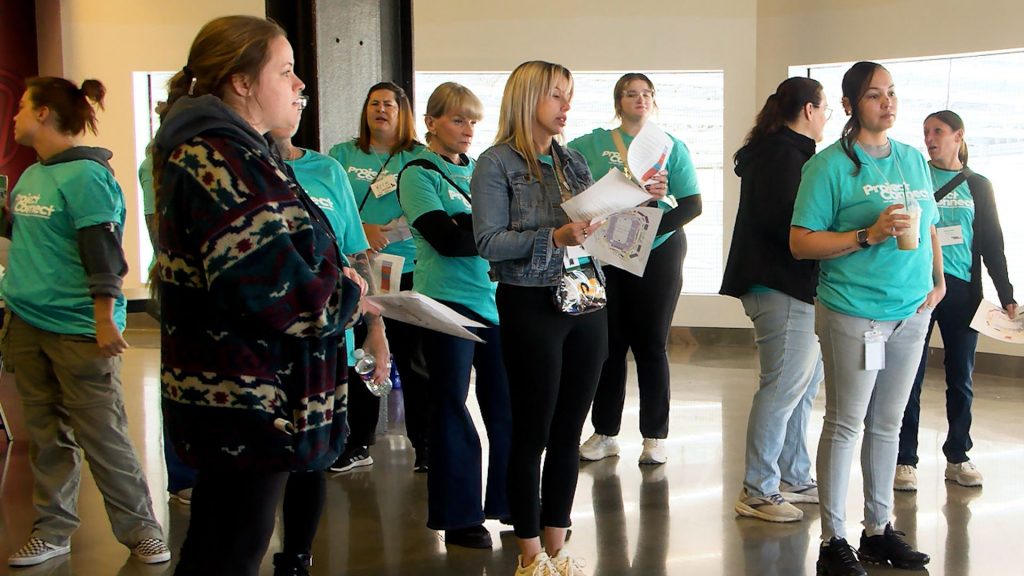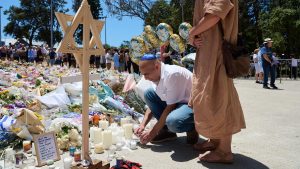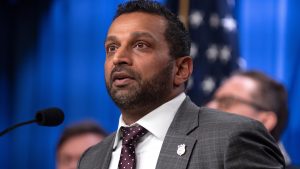Omaha’s response to America’s housing instability starts with connection

In an arena-turned-resource hub in Omaha, people lined up for what could be their first step toward stability. Project Connect, a one-day event hosted by Threshold CoC, brought together dozens of agencies offering everything from housing support to health care under one roof.
A one-day event with lasting impact
The goal is simple: remove barriers and meet people where they are.
“It’s about connection to all services, connection to shared housing and alternative housing methods, because in a post-COVID world, we don’t have access to rental assistance really anymore,” said Taylor Novak, the community engagement manager for Threshold CoC, and organizer of the event. “So really just access to everything and collaboration among that system.”
Novak said housing instability doesn’t always look the same. Some residents are living on the streets. Others are working full-time but struggling to keep up with rent.
“We’re all kind of in a position of housing instability, with the cost of living going up and limited rentals that are affordable and incomes that don’t match the need,” Novak said.
According to Threshold CoC’s latest data, which tracks homelessness across Douglas, Sarpy and Pottawattamie counties in Nebraska and Iowa, 1,609 people were experiencing homelessness on a single night in 2024. Most were staying in emergency shelters, about 1,178 people, while others were in transitional housing, safe havens or living unsheltered.
Melissa Neuenfeldt is a medical outreach worker who has spent the last decade providing care to people living outside. She said many of her patients are in survival mode.
“They are in survival mode, and many people have to focus only on what they’re going to eat, where they’re going to sleep, where they’re going to go to the bathroom and how they’re going to keep themselves safe,” Neuenfeldt said.
Unbiased. Straight Facts.TM
771,480 people experienced homelessness on a single night in the U.S. in 2024.

Threshold’s data also shows that between October 2023 and October 2024, 645 people returned unhoused after exiting housing programs, close to 16% of more than 4,100 who left. During that same time, 2,237 people exited into permanent housing, while 5,374 did not.
Neuenfeldt said events like Project Connect help fill critical gaps by eliminating delays in getting assistance.
“We need to bring services to the people as often as we can in order to get people connected to housing,” she said. “Which is the single greatest thing we can do to improve the health of people who are experiencing homelessness, is housing.”
Nationally, the picture is no less urgent.
National trends mirror local challenges
Federal data from the U.S. Department of Housing and Urban Development shows homelessness reached its highest recorded level in 2024, with more than 771,000 people without stable housing on a single night, or roughly 23 of every 10,000 Americans.
HUD officials attribute the rise to multiple factors, including the nation’s shortage of affordable housing, rising inflation, stagnant wages and the expiration of pandemic-era assistance programs.
The National Low Income Housing Coalition estimates the country is short nearly 7 million affordable homes for more than 10 million extremely low-income families.
And there isn’t a single state or county in America where someone working full-time at minimum wage can afford a modest two-bedroom apartment.
Events like Project Connect, are not a fix to the crisis, but can help bridge the gap between people and the systems meant to serve them.
“Our work is in restoring hope in the systems that have let people down, and getting them to engage again,” Neuenfeldt said.
The post Omaha’s response to America’s housing instability starts with connection appeared first on Straight Arrow News.





